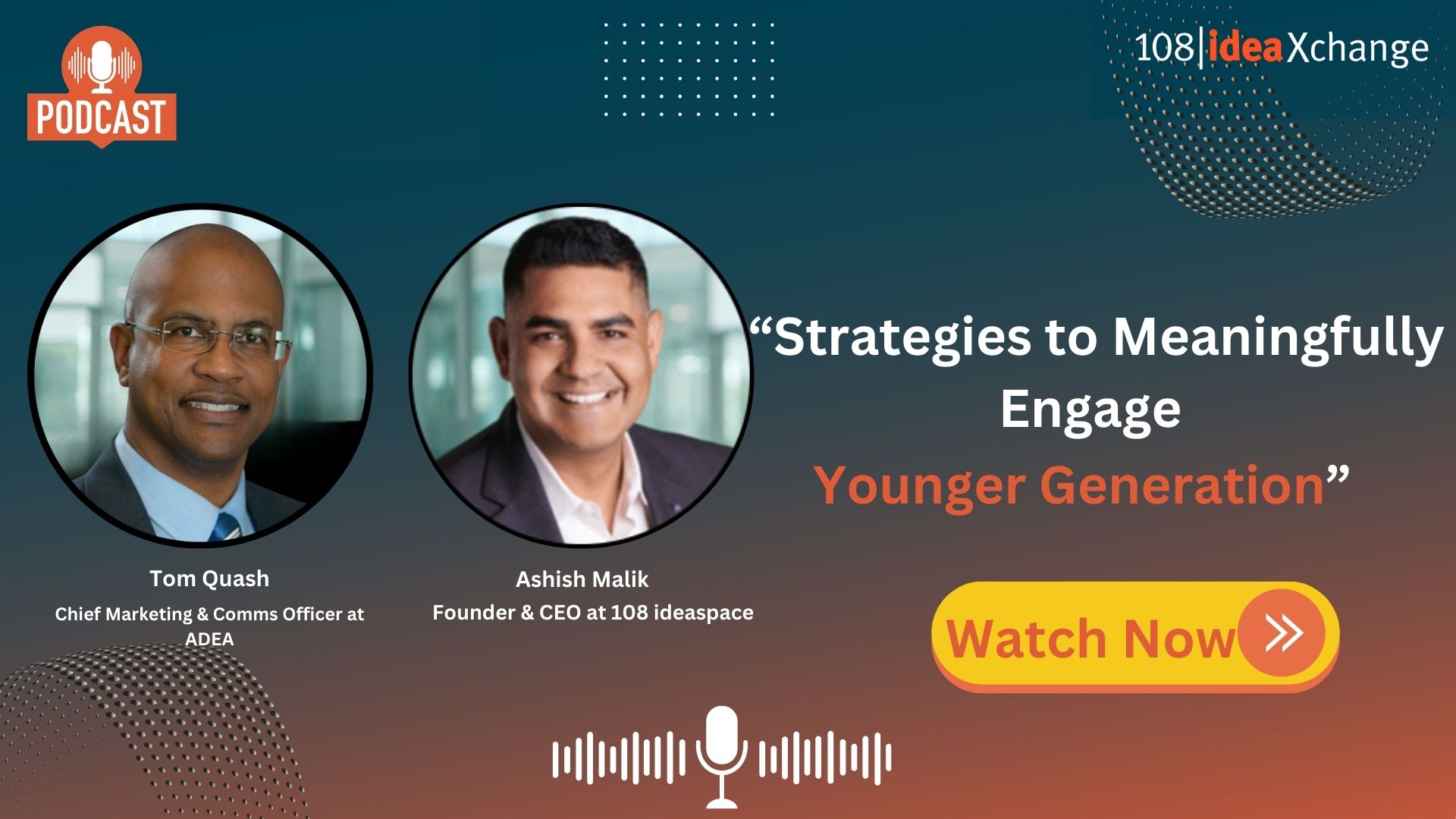How one association discovered their 7,500 student members weren’t ignoring them by choice – and the three critical gaps that changed everything
The Silent Membership Crisis
Picture this: You’re running an association with 7,500 student members. Your email open rates look healthy compared to industry benchmarks. Your online community is thriving. Your leadership feels confident about member engagement.
Then you dig deeper and discover a sobering truth: your youngest members are barely engaging at all.
This isn’t a hypothetical scenario. It’s the reality Tom Quash, Chief Communication and Marketing Officer at the American Dental Education Association (ADEA), faced when he looked beyond surface-level metrics to understand why Gen Z members seemed disengaged.
What he discovered challenges everything associations think they know about member engagement.
The Automatic Membership Trap
ADEA faces a unique challenge that many associations will recognize: when dental schools join their organization, students are automatically enrolled as members. They didn’t choose to join—membership was thrust upon them.
The result? A generation of members who never opted in to the experience.
Tom’s team tracked every possible engagement metric: email opens, resource downloads, online community posts, social media interactions, volunteer participation, and scholarship applications. Across the board, student engagement lagged significantly behind deans, administrators, and faculty.
But here’s what most associations miss: low engagement doesn’t always mean disinterest. Sometimes it means you’re speaking the wrong language on the wrong platform.
The Platform Disconnect
When ADEA conducted focus groups during their annual convention, they uncovered a fundamental misalignment that explains why so many associations struggle with younger members.
The revelation was stark:
- Where associations invest: Email marketing and online community platforms
- Where Gen Z actually lives: Social media platforms, primarily
Tom’s team had built a “fairly robust” social media presence, but they were still treating it as a secondary channel. Meanwhile, their primary engagement strategies—email and online communities—were reaching an audience that expected to find everything they needed on Instagram, TikTok, and YouTube.
The disconnect wasn’t about content quality. It was about platform expectations.
Beyond Benefits: The Belonging Problem
Traditional association value propositions focus on benefits, services, and professional development opportunities. Gen Z members acknowledge these have value, but they’re not the primary drivers of engagement.
What they’re really seeking: authentic belonging and community.
Through their research, ADEA identified three specific gaps that were preventing meaningful engagement:
- Financial Resources: Students facing unprecedented debt levels need practical guidance on financial management
- Professional Mentoring: While schools excel at peer mentoring, students crave connections with practicing professionals
- Residency Program Intelligence: Clear, accessible information about residency opportunities across institutions
None of these gaps could be filled with traditional association benefits. They required new approaches to community building and knowledge sharing.
The ABC Framework for Generational Engagement
Tom developed a systematic approach to addressing generational engagement challenges:
A – Analyze: Deep-dive into segment-specific disengagement patterns.
B – Build: Create targeted campaigns and strategies for specific groups
C – Customize: Deploy content through channels and formats that resonate with each segment
This framework moves beyond one-size-fits-all membership strategies to recognize that different generations have fundamentally different expectations about how they interact with organizations.
The Personalization Imperative
Gen Z has been raised in the age of Amazon, Netflix, and Spotify—platforms that learn and adapt to individual preferences. They expect the same level of personalization from their professional associations.
Tom’s approach breaks members into increasingly specific segments:
- High school students exploring dentistry
- Undergraduate pre-dental students
- First-year dental students (D1)
- Second-year dental students (D2)
- Third-year dental students (D3)
- Fourth-year dental students (D4)
Each segment receives content tailored to their specific stage in the professional journey, delivered through their preferred channels, at optimal times.
The goal isn’t just segmentation—it’s creating experiences that demonstrate the association understands exactly where each member is in their career development.
The Technology Balance Challenge
As associations race to adopt new technologies, Tom advocates for a measured approach: evaluate new tools based on their potential to solve specific engagement problems, not their novelty.
Key questions before adopting new technology:
- What specific problem does this solve?
- Will this increase engagement or member value?
- Does the ROI justify the investment in both money and time?
The mobile app dilemma perfectly illustrates this principle. While many associations assume Gen Z wants mobile apps, Tom’s research suggests they’re more interested in responsive, fast-loading websites that work seamlessly across devices.
The Email Transition Crisis
One of the most practical challenges associations face with student members is the email transition problem. Students use institutional email addresses during school, then abandon them upon graduation.
The result: associations lose contact with members at the exact moment they transition from students to professionals.
ADEA is addressing this by proactively collecting personal email addresses and maintaining engagement across both channels—a simple tactical change that solves a major strategic problem.
The Future of Association Engagement
Tom’s experience at ADEA reveals a broader truth about association membership in 2025: engagement strategies must be as diverse as member expectations.
The associations that thrive will be those that:
- Meet members where they actually spend time, not where associations prefer to engage
- Create genuine community experiences rather than just delivering benefits
- Use data and technology to personalize interactions at scale
- Build systematic processes for understanding evolving member needs
Your Next Move
The Gen Z engagement challenge isn’t unique to ADEA. Every association with younger members faces similar disconnects between traditional engagement strategies and evolving member expectations.
The question isn’t whether you should adapt your approach—it’s how quickly you can start.
Watch the Complete Strategy Podcast
Tom’s insights represent just the beginning of a comprehensive framework for generational engagement. In the full ideaXchange conversation, he reveals:
- Specific A/B testing strategies that dramatically improved student engagement
- Focus group methodologies that uncover authentic member needs
- Data-driven personalization tactics that scale across membership segments
- Technology evaluation frameworks that prevent costly mistakes
- Step-by-step implementation guides for the ABC engagement model
Access the complete ideaXchange episode and learn the full methodology →
Don’t let generational gaps become engagement gaps. Transform your approach to meet the next generation of members where they are.
Ready to bridge the engagement gap in your association?
The challenges Tom faced at ADEA mirror what hundreds of associations are experiencing right now. The difference between struggling and thriving often comes down to having the right strategic framework and implementation support.
Schedule a strategic consultation to explore generational engagement solutions for your association →











